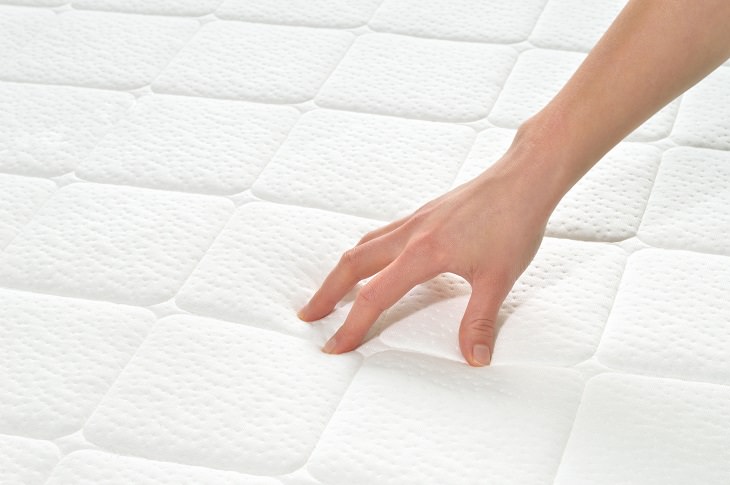
Autism(Autism spectrum disorder (ASD) is a neurodevelopmental disorder characterized by impaired social interaction, verbal and non-verbal communication, and restricted and repetitive behavior.
Autism spectrum disorder (ASD) and autism are both general terms for a group of complex disorders of brain development.
Parents usually notice signs in the first two years of their child's life. These signs often develop gradually, though some children with autism reach their developmental milestones at a normal pace and then regress. The diagnostic criteria require that symptoms become apparent in early childhood, typically before age three.
Autism’s most-obvious signs tend to appear between 2 and 3 years of age. In some cases, it can be diagnosed as early as 18 months. Some developmental delays associated with autism can be identified and addressed even earlier. Autism Speaks urges parents with concerns to seek evaluation without delay, as early intervention can improve outcomes.
Types of ASD
There are three different types of Autism Spectrum Disorders:
- Autistic Disorder (also called "classic" autism)This is what most people think of when hearing the word "autism." People with autistic disorder usually have significant language delays, social and communication challenges, and unusual behaviors and interests. Many people with autistic disorder also have intellectual disability.
- Asperger SyndromePeople with Asperger syndrome usually have some milder symptoms of autistic disorder. They might have social challenges and unusual behaviors and interests. However, they typically do not have problems with language or intellectual disability.
- Pervasive Developmental Disorder – Not Otherwise Specified (PDD-NOS; also called "atypical autism")People who meet some of the criteria for autistic disorder or Asperger syndrome, but not all, may be diagnosed with PDD-NOS. People with PDD-NOS usually have fewer and milder symptoms than those with autistic disorder. The symptoms might cause only social and communication challenges.
Signs and Symptoms of autism
ASDs begin before the age of 3 and last throughout a person's life, although symptoms may improve over time. Some children with an ASD show hints of future problems within the first few months of life. In others, symptoms might not show up until 24 months or later. Some children with an ASD seem to develop normally until around 18 to 24 months of age and then they stop gaining new skills, or they lose the skills they once had.
A person with an ASD might:
A person with an ASD might:
- Not respond to their name by 12 months
- Not point at objects to show interest (point at an airplane flying over) by 14 months
- Not play "pretend" games (pretend to "feed" a doll) by 18 months
- Avoid eye contact and want to be alone
- Have trouble understanding other people's feelings or talking about their own feelings
- Have delayed speech and language skills
- Repeat words or phrases over and over (echolalia)
- Give unrelated answers to questions
- Get upset by minor changes
- Have obsessive interests
- Flap their hands, rock their body, or spin in circles
- Have unusual reactions to the way things sound, smell, taste, look, or feel
Causes of Autism:
Autism is due to a combination of genetic and environmental factors. Some cases are strongly associated with certain infections during pregnancy including rubella and use of alcohol or cocaine.
Controversies surround other proposed environmental causes; for example, the vaccine hypotheses, which have since been disproven.
Autism affects information processing in the brain by altering how nerve cells and their synapses connect and organize; how this occurs is not well understood.
Is there any medical cure for Autism?
We know that autism is a complex, neurological, developmental disorder, which affects the way the brain processes information, the cause of which is still unknown. Since we do not know what causes autism, we do not have a way to fix (cure) it.
At present, there is no cure for autism: there is no medication, no pills, no injections which can make the autism go away. Of course, as a parent you may read or hear about many claims of cures for autism. This may be more so in the last few years with the emergence of the internet as a 'bazaar' spreading some truly bizarre promises of cure. Being an invisible condition, it is easy for parents to be swayed to the 'right treatment' that would make their child's autism somehow 'go away'.
Treatments for Autism:
Autism is not an illness that can be treated or 'fixed'. Instead, as mentioned earlier, it is a neurological condition, wherein one needs to teach the individual to reach his/her maximum potential using intervention and management strategies that would work most effectively with their unique learning style.
The most effective and well-documented intervention or management option for individuals with autism is a structured behavioural training programme. This intervention is based on understanding the unique learning styles of individuals with autism, making accommodations for the same, and using and adapting behavioural principles to teach.
The focus needs to remain at all times on the core areas of difficulty, i.e. communication and social understanding. Teaching appropriate play and leisure skills, and self-help skills, are equally important. Autistic children can make significant progress if the intervention is appropriate and consistent and hence, a combination of a good school and parent training is the best intervention strategy.
Early intervention, before the child is five, is especially crucial to the child's progress. This is why an early and accurate diagnosis is so important. Autistic children grow to become autistic adults, and there is a particular need for focus on teaching every skill to independence, and to provide meaningful outlets for social interaction and employment where possible.
Some of the scientifically proven effective intervention techniques include:
Treatment and Education of Autistic and related Communication handicapped CHildren Method (TEACCH) emphasizes on using skills that children already possess to enable them to become independent. Organizing the physical environment, developing schedules and work systems, making expectations clear and explicit, and visual materials are effective in developing skills and allowing people with autism to be independent of direct adult prompting.
Applied Behaviour Analysis (ABA) emphasizes on one-to-one sessions in discrete trial training (DTT) to develop cognitive, social, behavioral, fine motor, play, social and self-help skills. The technique involves structured presentation of tasks from most simple to more complex, breaking them down into small sub-skills, and then teaching each sub-skill intensely, one at a time. It involves repeated practices with prompting and fading of prompts to ensure success. It uses rewards or reinforcement to help shape and maintain desired behaviours and skills.
Verbal Behavior Analysis (VBA) is an addition to ABA and is also based on breaking down and teaching language in functional units unlike the teaching of language based on grammar. In addition to teaching at the table, teaching in (and with) the natural environment (NET) is important.
Picture Exchange Communication Systems (PECS) is built on the fact that non-verbal children with autism may attempt to spontaneously use objects to communicate.

People with autism tend to be visual learners, and a visual means of communication can help them to understand and use the process of communication. PECS aims to teach spontaneous social-communication skills by means of symbols or pictures and the teaching relies on behavioural principles, particularly reinforcement techniques. Behavioural strategies are employed to teach the person to use functional communicative behaviours to request desired objects. The requesting behaviour is reinforced by the receipt of the desired item.
All people with autism can and do make significant progress. They become more responsive to others as they learn to understand the world around them if the intervention that they receive is appropriate, consistent and autism friendly.
Can Autistic Children attend regular schools:
There are a number of autistic children who have been integrated into regular schools. The chances depend on several factors. The most important are the individual capacity and functioning levels of the child, how early diagnosis was received, and thereafter the kind and the appropriateness of the early intervention provided to the child.
Though some children with autism can learn like their typically developing peers, most have different learning styles and the therefore teaching styles also need to be different. Most children with autism may require some accommodations in the teaching style/ environment for them to be able to learn better and to keep the schooling a positive experience. Sometimes simple changes in existing classroom techniques and environmental adaptations make teaching autism-friendly. However, in some schools this may not be understood and therefore children with autism face difficulties and many may have to drop out of mainstream classrooms after grades four or five.
Organizations that cater to the needs of children and adults on the autism spectrum:
There are several organisations all over the world who are taking care the needs of children and adults on the austism spectrum. In India there are 22 such organisations located in major cities. From speech therapy to music therapy, these organizations are using various methods to bring a behavioural change and are doing some amazing work in this field.
I give below the link for the site listing out the organisations
Donate to the Organisations which help autistic children
We can donate to various organisations which help autistic children in different ways. Such donations are tax deductible.
Sources:
Pictures: Google images


